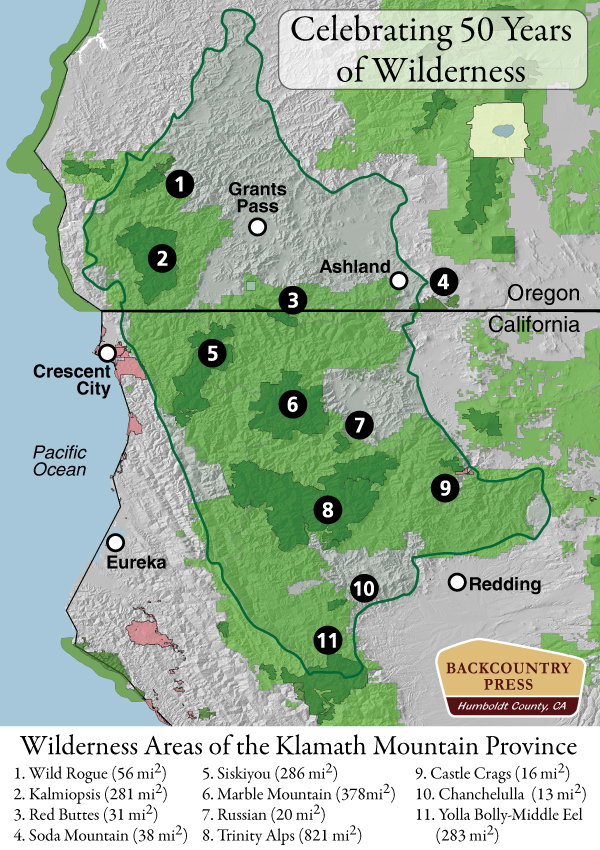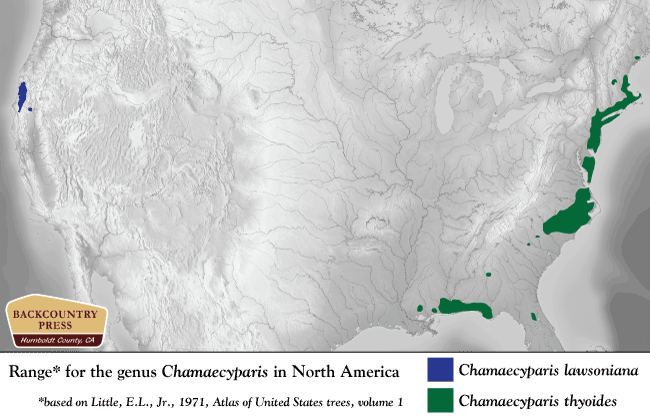The Trinity Alps
The Siskiyou Wilderness
Celebrating 30 years of protection
Protected in 1984 and expanded in 2006, the Siskiyou Wilderness now preserves 182,802 acres of some of the most species-rich temperate coniferous forests in North America. This film is a collection of images from years of hiking and exploring this diverse landscape – dedicated to my son, Sylas Siskiyou Kauffmann.
Klamath Mountain Wilderness
In 1964 Congress passed The Wilderness Act in a nearly unanimous vote. Though the idea of wilderness was nothing new, its legalized preservation was. The act was meant to acknowledge and define the immediate and lasting benefits of protecting wild places—stating that land shall be set aside for “preservation and protection…so as to remain untrammeled…to retain primeval character…to only be affected by forces of nature…and to guarantee solitude…devoted to un-mechanized public purposes.” I quickly discovered these places were for me—a freedom-loving environmentalist who enjoys unconfined primeval recreation.
— Conifer Country (2012)
Since first exploring the Siskiyou Wilderness in February of 2003, I became convinced that the Klamath Mountain wilderness areas contain some of the wildest and most rugged terrain in the contiguous United States. This is country that is often so steep, and thus spatially isolated, that there are places that have rarely–if ever–been visited by humans. The Klamath Mountains also hold one of the most species-rich temperate forest in North America–with nearly 3,500 taxa documented. The diversity is due to many factors, but in essence it represents a means to appreciate the wildness that has maintained across the numerous sub-ranges in the region. The variable topography, relatively stable climate, and varied soil types have offered (and continue to do so) a refuge for plants to persist or speciate. This is a phenomenon which I am cautiously optimistic will persist into the future, even as climates rapidly change to to human activity–I also beleive this to be true do to the wilderness that is preserved that will help to promote biodiversity. September 3rd, 2014 is the 50th anniversary of the Wilderness Act – wilderness is a part of me as are these mountains.

A Connecticut Migration
North America holds two of the most species-rich temperate forests in the world: those of the southern Appalachian and Klamath mountains. What do these locations have in common? Glaciers and seas did not completely cover them during the Cenozoic and the mountains were monadnocks, or islands above the plains, offering temperate refuges to plants and animals over time. Both locations have historically maintained a moderated climate. These areas are beyond the southern terminus of the enormous continental ice sheets of the Pleistocene. Some plants undoubtedly remained in these regions through historic climatic change, while other species repeatedly moved in as climate cooled and glaciers pushed southward and then moved out following glaciers northward. These dynamic fluctuations have cradled plant diversity in these two unique regions.
The current consequences of these historical patterns are that the Klamaths and southern Appalachians have grand floristic diversity, a concentration of endemic plants, and a fundamental importance to the forest floras of nearby regions (Whittaker 1960). Per unit area, the Klamath Mountains and the southern Appalachian Mountains hold more plant taxa than any others in North America. Plant genera such as Cornus (dogwoods), Asarum (wild ginger), and various conifers (Pinus, Abies, Thuja, Chamaecyparis) grow a continent apart while providing a comparative glimpse of an ancient flora.
-From Conifer Country
The Atlantic white-cedar (Chamaecyparis thyoides) and the Chester Cedar Swamp
My family and I made a Connecticut “migration” in July of 2014 to visit family near New York city. While I was looking forward to family time, I wondered if there could possibly be and natural, wild space anywhere near the largest population center in the country. A google search revealed that Connecticut does indeed have a few Natural Landmarks that preserve and celebrate the states geological and ecological heritage. I picked one to visit that was relatively close to our “home” as well as one that celebrates one of the most ancient lineages of plants on Earth – a conifer!
